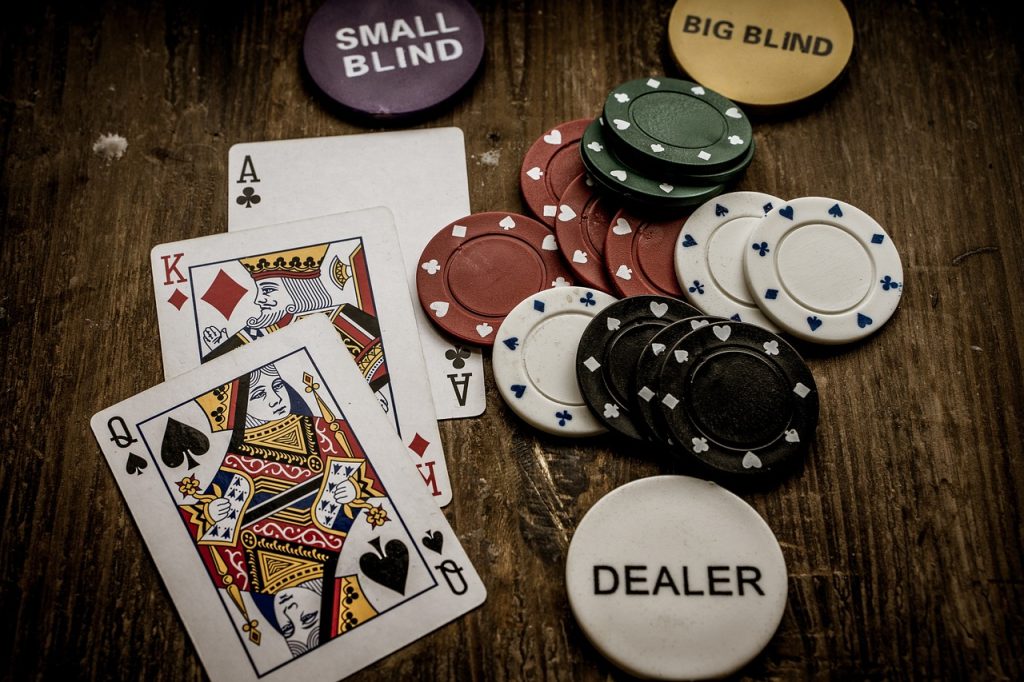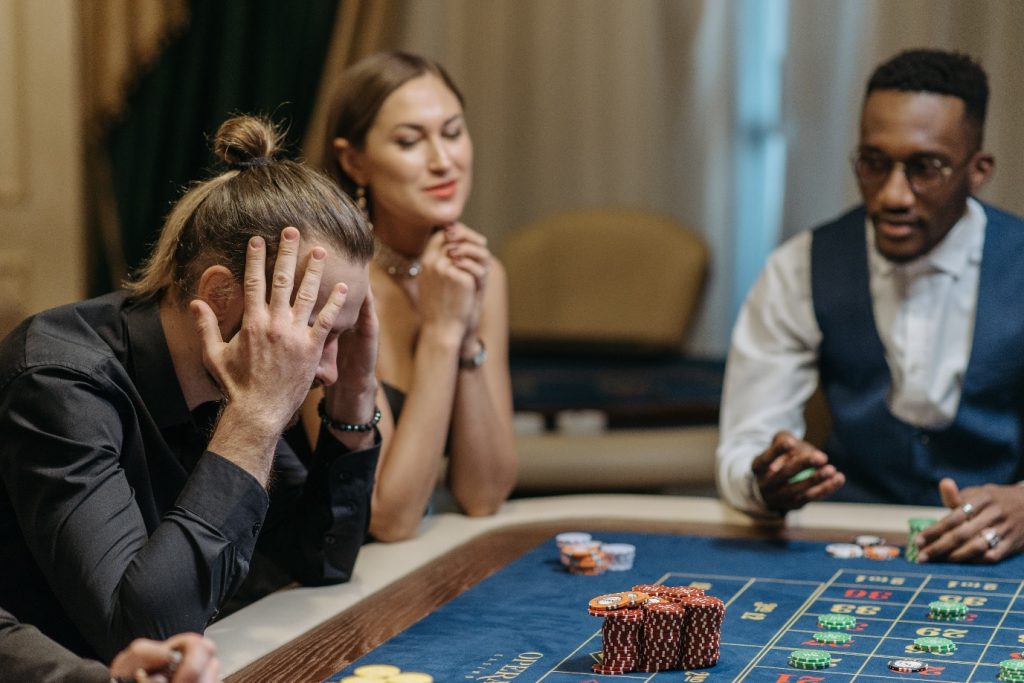Mastering the Art of Bluffing in Poker

1. Introduction to Bluffing in Poker
Bluffing is an essential and captivating aspect of the game of poker. It is an art form that allows players to deceive their opponents by making them believe they hold a stronger hand or a weaker hand than they actually do. Mastering the art of bluffing is not only about having a good poker face but also understanding the psychology behind it, analyzing the game situation, and adapting to opponents’ playing styles. In this article, we will explore the strategies and techniques necessary to become a proficient bluffer and gain an edge at the poker table. From the basics of bluffing to advanced tactics, we will delve into the intricacies of bluffing in poker, equipping you with the knowledge and skills to bluff effectively and increase your chances of success.
Mastering the Art of Bluffing in Poker
1. Introduction to Bluffing in Poker
1.1 The Role of Bluffing in Poker
Bluffing is like the spice that brings flavor to the game of poker. It’s that special ingredient that keeps your opponents on their toes, never knowing if you truly have a winning hand or if you’re just pulling their leg. Bluffing is the art of convincing your opponents that you have a stronger hand than you actually do, ultimately leading them to make poor decisions and lose their chips.
1.2 The Importance of Mastering Bluffing Techniques
While bluffing can be a risky move, mastering the art of bluffing can greatly enhance your poker skills. It adds an element of unpredictability and strategic thinking to your game, giving you an edge over your opponents. Knowing how and when to bluff can help you steal pots that you otherwise wouldn’t have won, and it can make your opponents doubt their own hands, leading them to fold when they actually have a strong hand.
2. Understanding the Psychology of Bluffing
2.1 The Psychological Factors in Bluffing
Bluffing is as much about psychology as it is about the cards. Understanding the psychological factors at play can give you a significant advantage. Humans are emotional beings, and poker is a game that taps into those emotions. Bluffing preys on the fear, doubt, and uncertainty that your opponents experience when facing a potential strong hand. By manipulating their emotions and inducing doubt, you can persuade them to make poor decisions and fold their hands, even when they hold a winning hand.
2.2 Recognizing and Exploiting Opponents’ Psychological Weaknesses
To be successful at bluffing, you must keenly observe and exploit your opponents’ psychological weaknesses. Some players are naturally risk-averse and tend to fold easily when faced with a bold move. Others may have a strong aversion to losing and will be hesitant to give up their chips, even if their hand is weak. By recognizing these tendencies, you can tailor your bluffing strategy to take advantage of their weaknesses and increase your chances of success.
3. Analyzing the Game and Opponents
3.1 Assessing the Game Situation
Before attempting a bluff, it’s crucial to assess the game situation. Consider the dynamics at the table, the size of the pot, and the playing styles of your opponents. Bluffing in early stages of the game, when the pot is small and opponents are more likely to call, may not be as effective as bluffing during later stages when the pot is larger and the pressure is higher. Understanding the flow of the game will help you make informed decisions about when bluffing is most opportune.
3.2 Gathering Information on Opponents
To bluff successfully, you need to gather information on your opponents. Pay attention to their betting patterns, body language, and previous hands played. Are they generally aggressive or conservative? Do they tend to bluff frequently or only when they have a strong hand? This information will give you insights into their tendencies and enable you to adjust your bluffing strategy accordingly.
4. Timing and Frequency of Bluffs
4.1 Selecting the Right Moments to Bluff
Timing is everything when it comes to bluffing. Bluffing when the odds are against you or when your opponents have shown strength can lead to disaster. Instead, look for moments when the board presents possibilities that you can exploit. Bluffing when the community cards allow for potential strong hands, such as a flush or straight, can make your opponents doubt the strength of their own hands and increase the chances of them folding.
4.2 Balancing Bluffing Frequency
Bluffing too frequently can quickly backfire, as your opponents will catch on to your strategy. It’s essential to strike a balance and vary your bluffing frequency. If you bluff sparingly, your opponents will be more likely to give you credit for having a strong hand when you do make a move. However, if you never bluff, your opponents may become too comfortable calling your bets, leading to missed opportunities. Finding the right balance between bluffing and playing solid hands is the key to successful bluffing.
Mastering the art of bluffing takes practice, observation, and a touch of psychological finesse. By understanding the role of bluffing, analyzing your opponents, and selecting the perfect moments to bluff, you’ll be on your way to becoming a poker bluffing maestro. So, sharpen your poker face, trust your instincts, and may the bluff be with you!
5. Implementing Different Bluffing Techniques
Bluffing is an art form in poker, and mastering different bluffing techniques can give you a significant advantage at the table. Here are a few strategies you can use to bluff your way to victory:
5.1 Semi-Bluffing: The Power of Drawing Hands
Semi-bluffing is a sneaky tactic that involves placing bets or raises with a hand that has the potential to improve in later rounds. For example, if you have a hand with a strong draw, like four cards to a flush or a straight, you can place a bet to make your opponents believe you have a strong hand. If you hit your draw on a later street, your bluff can turn into a legitimate winning hand. This technique adds a level of complexity to your bluffing game and keeps your opponents guessing.
5.2 Over-Bluffing and Under-Bluffing
Finding the right balance between bluffing too much and bluffing too little is crucial in poker. Over-bluffing involves bluffing too frequently, which can lead to your opponents catching on and calling your bluffs more often. On the other hand, under-bluffing means not bluffing enough, which can result in missed opportunities to win pots. It’s important to find the sweet spot between these two extremes, keeping your opponents on their toes while maintaining a level of credibility at the table.
5.3 The Continuation Bet: Bluffing after the Flop
The continuation bet is a classic bluffing move that occurs after the flop when you are the pre-flop aggressor. Even if you didn’t hit anything on the flop, placing a bet can make your opponents think that you have a strong hand. This move takes advantage of the psychological pressure it puts on your opponents and can often force them to fold weaker hands. However, it’s essential to use this strategy selectively and consider the texture of the board and your opponents’ tendencies before making a continuation bet.
6. Reading and Reacting to Bluffs from Opponents
Being able to identify and react to bluffs from your opponents is equally important as bluffing yourself. Here are a few tips for reading and reacting to bluffs:
6.1 Identifying Potential Bluffs
Look for consistent betting patterns, sudden changes in behavior, or unusual bet sizing from your opponents. These can be signs that they are attempting to bluff. Additionally, pay attention to their body language, as certain physical cues like nervousness or agitation can also indicate a bluff.
6.2 Evaluating the Strength of Opponents’ Hands
Try to assess the strength of your opponents’ hands based on the information available. Consider the community cards, their betting patterns, and their previous actions in the hand. By analyzing these factors, you can make more informed decisions about whether they are bluffing or holding a strong hand.
6.3 Adjusting Strategies to Counter Opponents’ Bluffs
Once you’ve identified a bluff from an opponent, it’s time to adjust your strategy accordingly. If you believe your opponent is bluffing, you can choose to call their bet or even raise to put more pressure on them. However, be cautious and don’t fall into the trap of assuming every bet is a bluff. It’s crucial to gather enough evidence before making any decisions.
7. Bluffing Etiquette and Strategy
Bluffing not only requires skill but also good etiquette. Here are a couple of points to keep in mind:
7.1 Maintaining a Professional and Polite Atmosphere
Bluffing is an integral part of the game, but it’s important to remember to be respectful towards your opponents. Avoid excessive taunting or trash talk, as this can create a hostile environment. Maintain a level of professionalism and show good sportsmanship, even when you successfully pull off a bluff.
7.2 Using Bluffs as a Strategic Tool
Remember that bluffing is not just about fooling your opponents. It’s a strategic tool that can be used to manipulate the dynamics of the game. By bluffing selectively and with purpose, you can influence your opponents’ actions and gain an advantage. Keep your bluffs calculated and well-timed to maximize their effectiveness.
8. Practicing and Improving Bluffing Skills
Like any other skill in poker, bluffing takes practice to master. Here are a few suggestions to improve your bluffing abilities:
8.1 Simulating Bluffing Scenarios in Practice Sessions
Take advantage of practice sessions or low-stakes games to practice your bluffing techniques. Experiment with different strategies and observe how your opponents react. This will allow you to fine-tune your skills and gain confidence in your ability to execute successful bluffs.
8.2 Learning from Mistakes and Analyzing Bluffing Techniques
Sometimes, bluffs don’t work out as planned. Instead of getting discouraged, use these moments as learning opportunities. Analyze your bluffs and reflect on what went wrong. Did you misread your opponents? Were you too obvious? Learning from your mistakes will help you refine your bluffing techniques and make better decisions in the future.
So, go forth and master the art of bluffing! With these tips and a little bit of practice, you’ll be able to bluff your way to victory at the poker table while keeping the game fun and exciting. Remember, it’s all about strategy, timing, and a healthy dose of wit. Good luck!In conclusion, mastering the art of bluffing in poker requires practice, observation, and a deep understanding of the game dynamics. By incorporating the strategies and techniques discussed in this article, you can elevate your bluffing game to new heights. Remember, bluffing is not about taking unnecessary risks, but rather a calculated and strategic approach to manipulate your opponents’ perception. With time and experience, you can become a formidable bluffer, capable of outsmarting even the most astute opponents. So, go forth, embrace the challenge, and may your bluffs be daring and successful. Good luck at the poker table!
FAQ
1. Is bluffing an essential skill in poker?
Bluffing is indeed an essential skill in poker. It allows players to create uncertainty and deception, making it difficult for opponents to accurately assess the strength of their hand. By mastering bluffing techniques, players can gain a significant advantage and increase their chances of winning.
2. How do I determine the right moment to bluff?
Determining the right moment to bluff requires careful analysis of the game situation and your opponents’ tendencies. Look for opportunities when the community cards or the betting patterns suggest weakness from your opponents. Additionally, paying attention to their reactions and body language can provide valuable insights into their likely hand strength.
3. What is the difference between bluffing and semi-bluffing?
Bluffing involves betting or raising with a weak hand, hoping to make opponents fold stronger hands. Semi-bluffing, on the other hand, involves betting or raising with a drawing hand that has the potential to improve in subsequent rounds. Semi-bluffs have the advantage of having multiple ways to win – either by making opponents fold or by hitting the desired cards to make a strong hand.
4. Are there any risks associated with bluffing in poker?
Yes, bluffing carries certain risks. If your opponents see through your bluff, they may call or raise, putting you in a difficult position. Bluffing too often or without a sound strategy can also lead to predictability, making it easier for opponents to exploit your tendencies. It is important to strike a balance and vary your bluffing frequencies to maintain an element of surprise while minimizing risks.

Looking to promote your sports betting and casino services effectively? AdHang offers Gambling SEO and specialized marketing services tailored to reach and engage your target audience. With a focus on strategic messaging and wide-reaching digital marketing tactics, AdHang can help elevate your brand and drive results in the competitive online gambling industry. Click here to discover how AdHang’s expertise can take your sports betting and casino marketing to the next level.









